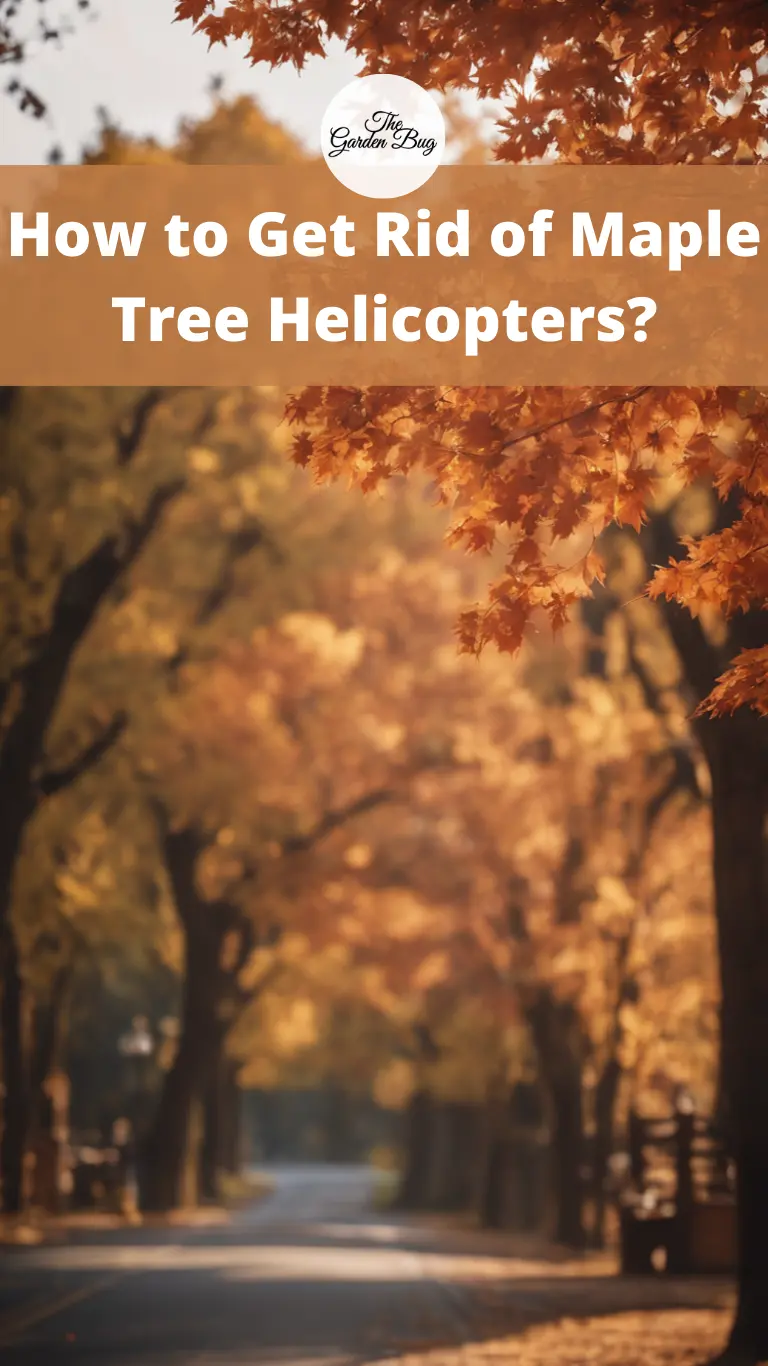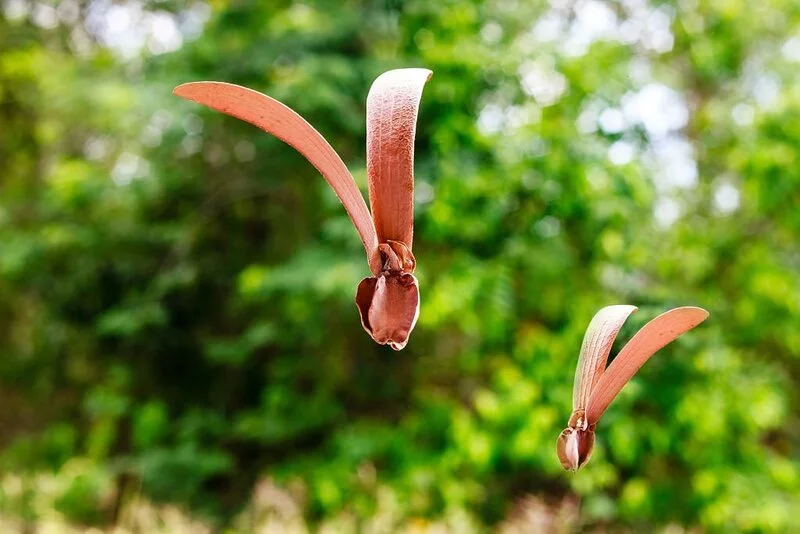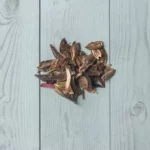Are you tired of cleaning up the whirligig seeds or ‘helicopters’ that your maple tree showers down every spring? If you’re nodding along, you’ve come to the right place! Maple tree helicopters, technically known as samaras, can be a bit of a nuisance to some people, despite their fascinating design and purpose. While they are an important part of the maple tree’s life cycle and our ecosystem, it’s understandable that you might want to minimize the mess they can create in your yard. Let’s dive into the world of maple tree helicopters and find ways to manage them better.
- 【Strong and Durable】The 9 Tine Garden Leaf Rake are made of high quality cast iron and carbon steel and are high temperature reinforced,so that they will not bend when hit by rocks, allowing you to last longer.
- 【Easy To Hung】 Adopt ergonomic TPR soft handle, the handle can be hung on the wall to save storage space.
- 【Adjustable Pole】 The pole can be adjusted from 30.5 to 40.5 inches, which allows you to protect your back at work, and of course you can let your child try work at the smallest size.
- 【Multi-function 9 tooth rake】Each rake has 9 spaced out tines for gathering weeds and leaves, cultivating, turning, and loosening soil.
- 【After-sales service】 100% satisfaction guarantee -30 days free replacement, 2 years warranty. So if you have any questions, please feel free to contact us, we will provide you with a satisfactory solution within 24 hours.
Understanding Maple Tree Helicopters
Before we tackle the cleanup, it’s important to understand what these helicopters are and why maple trees produce them. Maple tree helicopters are essentially seeds with thin, paper-like wings that spin or ‘helicopter’ down to the ground when released. This clever design helps the seeds disperse far from the parent tree, ensuring the continuation of the species.
Maple trees, like all plants, have one main purpose – to reproduce. The production of helicopters is a part of their natural reproductive cycle. While they might seem annoying when you’re raking them up, these little helicopters play a crucial role in the tree’s survival and the spread of this beautiful species.
Preventing Maple Tree Helicopter Overpopulation
If you’re feeling overwhelmed by the number of helicopters your maple tree produces, you might be wondering if there’s a way to reduce their numbers. Here are a couple of options:
- Tree Pruning: Pruning your tree can reduce the number of seeds it produces. However, this needs to be done correctly and at the right time to avoid harming the tree. It’s best to seek help from a professional arborist.
- Growth Regulators: Some professional tree services offer growth regulator injections that can reduce seed production. However, it’s important to know that these can affect the overall health and growth of your tree.
While these methods can cut down on the number of helicopters, they do not completely eliminate them and can potentially harm the tree or disrupt the local ecosystem. It’s crucial to weigh these considerations before deciding on a course of action.
Cleaning Up Maple Tree Helicopters
Now that we understand why these helicopter seeds are here, let’s talk about managing them. Here’s a simple step-by-step guide:
- Let Them Fall: Wait until most of the helicopters have fallen before starting the cleanup. This way, you’ll only have to do the task once or twice.
- Rake Them Up: Use a garden rake to collect the helicopters. Aim to do this on a dry day as wet helicopters can stick to the ground, making them harder to gather.
- Compost or Dispose: You can add the collected helicopters to your compost pile or dispose of them in your green waste bin.
Strategies for Dealing with Helicopter Seedlings
If you’ve had helicopters in your yard, you might notice little maple tree seedlings popping up in your lawn or garden. Here’s how to deal with them:
- Regular Mowing: Regularly mowing your lawn can help prevent the seedlings from growing into larger trees. The mower will cut off the seedlings, preventing them from getting bigger.
- Manual Removal: For seedlings that appear in garden beds, manual removal is usually the best approach. Try to get them while they’re still young—the earlier, the easier they are to remove.
Selecting the Right Maple Tree
If you’re considering planting a new maple tree but want to avoid the helicopter mess, keep in mind that different species of maple trees produce different amounts of helicopters:
- Sugar Maples: These produce a large number of helicopters.
- Red Maples: These produce a moderate amount of helicopters.
- Japanese Maples: These tend to produce fewer helicopters, making them a good option for those who love maples but not the mess.
Remember, every tree comes with its own set of pros and cons. Choose the one that fits best with your lifestyle, tolerance for maintenance, and love for the spectacle of nature.
- BRIGHT COLORS — Shades of Red, Orange, & Green During Spring, Summer, and Fall Seasons
- MODERATE GROWTH RATE — See Heights of 1-2 Feet per Year
- IMPROVE YOUR GARDEN & LAWN — Topiary Tree for Outdoor In Ground Growth or Patio Containers
- COLD HARDY — Grow Across the USA in Planting Zone 5-9
- ESTABLISHED FOR PLANTING — Not Starter Plants or Seedlings, Already Rooted for Transplant in a 1 Gal. Pot
Conclusion
Dealing with the helicopter seeds of a maple tree can feel like an ongoing battle. But remember, these fascinating seeds play a crucial role in the life cycle of these magnificent trees. While they can be a bit of a nuisance, with a better understanding and the right strategies, you can keep your yard tidy without too much hassle. So, next time when the maple tree starts shedding its helicopters, instead of sighing, take a moment to marvel at the genius of nature’s design.
FAQs
- Are maple tree helicopters harmful to my lawn or garden? No, they’re not harmful, but they can sprout into new trees if not dealt with.
- Can I use maple tree helicopters in compost? Yes, you can add them to your compost pile, but they might take a while to break down due to their woody structure.
- What’s the best time to clean up helicopters? It’s best to wait until most of them have fallen before you start cleaning up. This usually happens in late spring or early summer.







